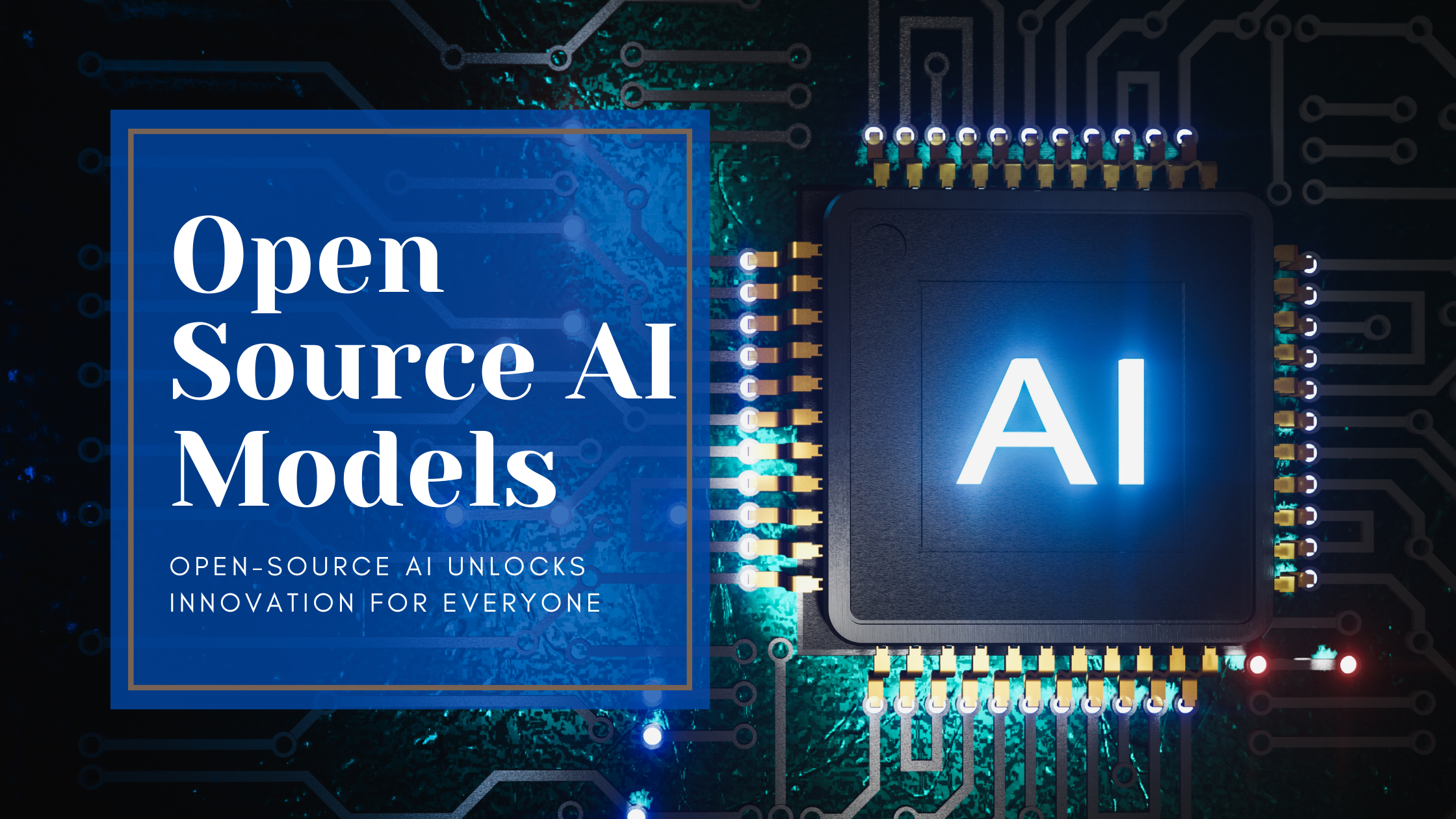Open Source AI Models

What are Open Source Models?
Imagine building a complex machine. Instead of keeping all the blueprints and parts secret, you share them with everyone. This is essentially what open source models are in the world of artificial intelligence (AI). These are AI models whose code and underlying data are publicly accessible. Unlike closed-source models developed by companies like OpenAI or Google, which are kept proprietary, open source models allow anyone to inspect, modify, and distribute them freely.
The beauty of open source is that it fosters collaboration, innovation, and transparency. By sharing knowledge and resources, researchers and developers can build upon each other's work, accelerating progress in AI. Additionally, open source models help to level the playing field, giving smaller organizations and individuals access to cutting-edge technology.
Examples of Open Source Models
The landscape of open source AI models is rapidly evolving, with new and improved models being released regularly. Here are some notable examples:
Developed by Meta AI, Llama has gained significant attention for its impressive performance across various tasks. It comes in different sizes, from smaller models suitable for running on laptops to larger ones capable of handling complex challenges.
It is a family of lightweight, state-of-the-art open-source language models developed by Google. These models are built on the same research and technology that underpin Google's powerful Gemini models, but they are designed to be more accessible and easier to use.
The second version of OpenAI’s language model has been open-sourced. Although it’s not as advanced or versatile as GPT-3.5 or GPT-4—using 1.2 billion parameters compared to GPT-4’s over one trillion—it still performs well for various language-related tasks like text generation and chatbot functionalities. OpenAI has released GPT-2 under the MIT license, which aligns with open-source standards.
It stands for Bidirectional Encoder Representations from Transformers, is a groundbreaking natural language processing (NLP) model developed by Google. It marked a significant leap forward in how computers understand and process human language.
While primarily known for image generation, Stable Diffusion also includes text-based capabilities. It has been widely adopted for creative applications and research.
Created by TII Abu Dhabi, Falcon is another strong contender in the open source arena. It has shown promising results in tasks like text generation, translation, and coding.
One of the earlier large language models to be open-sourced, GPT-J demonstrated the potential of these models for tasks like text summarization, translation, and question answering.
A multilingual language model developed by a large consortium of researchers, Bloom aims to be a more inclusive and diverse model.
Developed by xAI, Grok-1 is a significant addition to the open-source AI landscape.It features a massive 314 billion parameters and employs a Mixture-of-Experts (MoE) architecture
Model Weights, Variations, and Capabilities
Open source models typically come with model weights. Think of these as the model's "knowledge" acquired through training on vast amounts of data. Different models have varying numbers of parameters (weights), influencing their size and complexity. Larger models generally have more capacity to handle complex tasks but require more computational resources.
Model variations refer to different versions or fine-tuned models based on the same core architecture. For example, a language model might have variations optimized for different tasks like translation, summarization, or code generation.
Capabilities of open source models are rapidly expanding. They can generate text, translate languages, write different kinds of creative content, and answer your questions in an informative way. Some models can even write code, create different kinds of creative content, and translate languages. However, it's important to note that these models are still under development and might not always produce accurate or reliable results.
Llama 3.1 - A New Benchmark
Recently, Meta AI released Llama 3.1, the latest iteration of its popular language model series. This model represents a significant leap forward in open source AI, demonstrating capabilities that rival some of the best closed-source models.
Llama 3.1 boasts improved performance across a wide range of tasks, including factual reasoning, coding, and summarization. It also excels in multilingual capabilities, making it a valuable tool for users worldwide. The model's ability to generate human-quality text has set a new standard for open source language models.
With the release of Llama 3.1, the gap between open source and closed-source AI is narrowing rapidly. This is exciting news for researchers, developers, and businesses, as it opens up new possibilities for innovation and democratizes access to advanced AI technology.
Open source models are transforming the AI landscape. By making these powerful tools accessible to the public, we are fostering a collaborative ecosystem where innovation can thrive. While there is still room for improvement, the rapid progress in open source AI is truly remarkable. As models like Llama 3.1 continue to push the boundaries, we can expect even more impressive advancements in the near future.